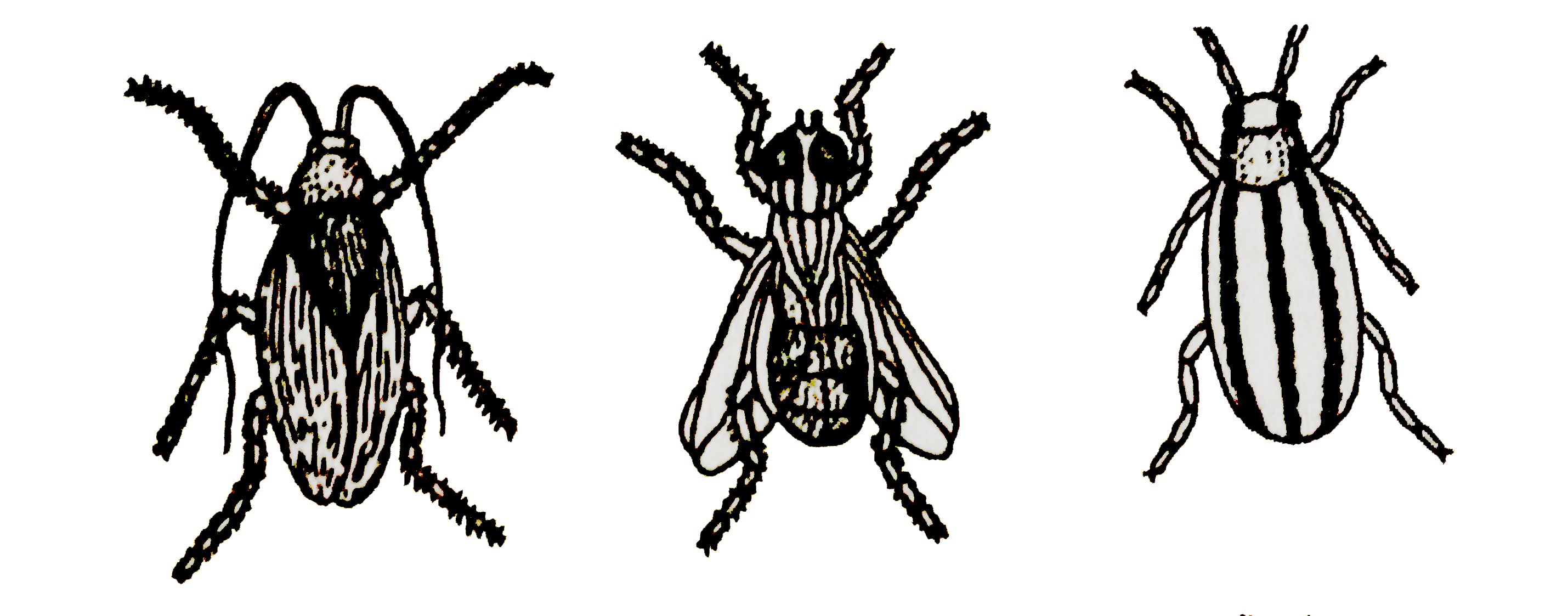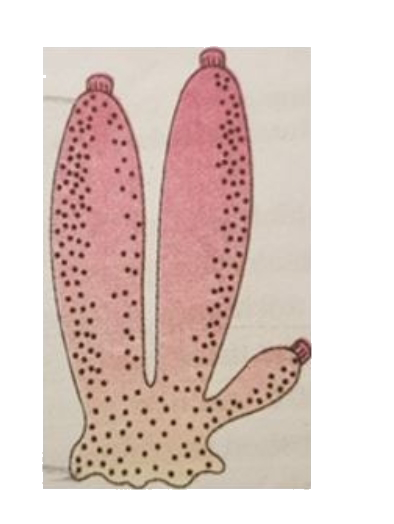Identify the respective phylum to which the following organisms belong. Give their characteristics.
Velvety green beds appearing on the wall in a shady moist place.
Step-by-Step Solution:
1. Identify the Organism: The description provided in the question refers to "velvety green beds appearing on the wall in a shady moist place." This suggests the presence of a type of plant that thrives in such environments.
2. Determine the Phylum: Based on the characteristics of the described organism, it can be identified as belonging to the phylum Bryophyta (commonly known as bryophytes).
3. Characteristics of Bryophytes:
- Multicellular Plants: Bryophytes are multicellular organisms.
- Autotrophic: They are capable of photosynthesis due to the presence of chlorophyll, allowing them to produce their own food.
- Reproduction: They reproduce primarily through spores, which are produced in specialized structures.
- Primitive Structure: Bryophytes have a simple body structure, lacking true roots, stems, or leaves. Instead, they have structures called rhizoids that help anchor them to the substrate.
- Absence of Vascular Tissue: Bryophytes do not possess a vascular system (xylem and phloem), which is characteristic of more advanced plants.
4. Conclusion: Therefore, the organism described in the question belongs to the phylum Bryophyta, and its characteristics include being multicellular, autotrophic, reproducing via spores, having a primitive body structure, and lacking vascular tissue.
---
- Multicellular Plants: Bryophytes are multicellular organisms.
- Autotrophic: They are capable of photosynthesis due to the presence of chlorophyll, allowing them to produce their own food.
- Reproduction: They reproduce primarily through spores, which are produced in specialized structures.
- Primitive Structure: Bryophytes have a simple body structure, lacking true roots, stems, or leaves. Instead, they have structures called rhizoids that help anchor them to the substrate.
- Absence of Vascular Tissue: Bryophytes do not possess a vascular system (xylem and phloem), which is characteristic of more advanced plants.
Topper's Solved these Questions
- DIVERSITY IN LIVING WORLD - PLANTSBOOK - PEARSON IIT JEE FOUNDATIONCHAPTER - DIVERSITY IN LIVING WORLD - PLANTSEXERCISE - TEST YOUR CONCEPTS
91 Videos
- DIVERSITY IN LIVING WORLD - PLANTSBOOK - PEARSON IIT JEE FOUNDATIONCHAPTER - DIVERSITY IN LIVING WORLD - PLANTSEXERCISE - MASTERING THE CONCEPTS (Knowledge and Understanding )
52 Videos
- CELL - FUNDAMENTAL UNIT OF LIFE BOOK - PEARSON IIT JEE FOUNDATIONCHAPTER - CELL - FUNDAMENTAL UNIT OF LIFE EXERCISE - ASSESSMENT TESTS (GIVE SCIENTIFIC REASONS)
4 Videos
- DIVERSITY IN LIVING WORLD- ANIMALSBOOK - PEARSON IIT JEE FOUNDATIONCHAPTER - DIVERSITY IN LIVING WORLD- ANIMALSEXERCISE - ASSESSMENT TESTS
44 Videos
Similar Questions
Identify the respective phylum to which the following organisms belong. Give their characteristics.
Small green threads sticking to rocks in water bodies.
View SolutionIdentify the respective phylum to which the following organisms belong. Give their characteristics.
Fine cotton thread-like tuft on the surface of a piece of bread kept open.
View Solution
Knowledge Check
The jointed legs are the characteristic feature of the following organisms. They belong to the phylum called :
 AAnnelidaBArthropodaCVertebrataDAves
AAnnelidaBArthropodaCVertebrataDAves
Velvety green beds appear on the walls during rainy season. Give reason.
View SolutionIdentify the organism and the phylum to which it belongs in the following diagram ?

View SolutionWrite the class / phylum to which the following animals belong giving one reason for it :
(i) Euplectella
(ii) Nereis
(iii) Great while shark
View SolutionIdentify the following parasites and the phylum to which they belong.
It invades the skin of humans and causes elephantiasis.
View SolutionIdentify the following parasites and the phylum to which they belong.
It lives in the intestine of humans and causes vomiting.
View SolutionWhich of the following plant group is found in moist and shady places?
View SolutionIdentify the following parasites and the phylum to which they belong.
It resides in the stomach of humans and causes itching anus and stomach ache.
View Solution
